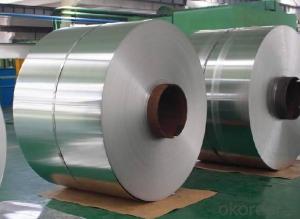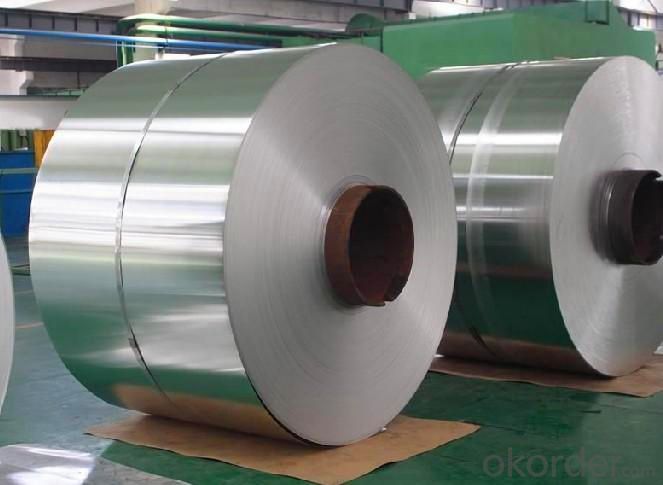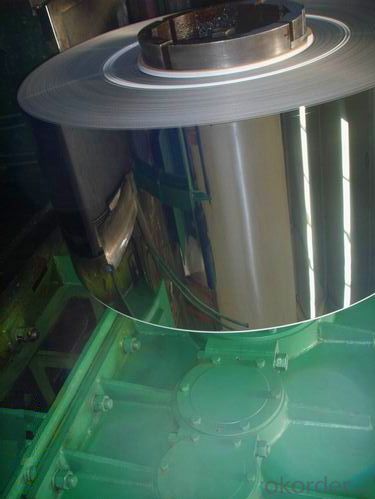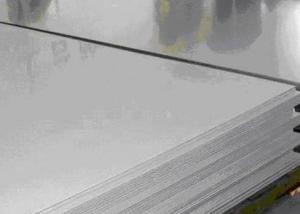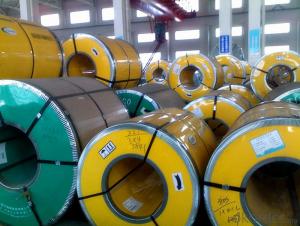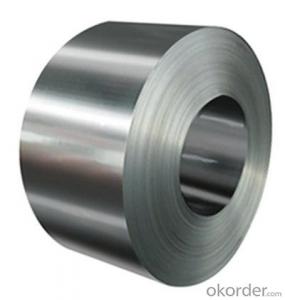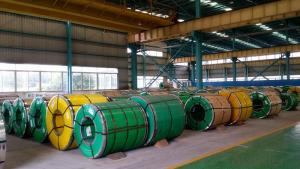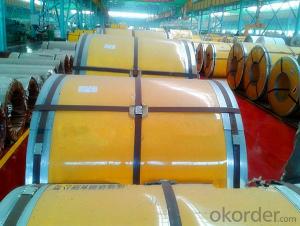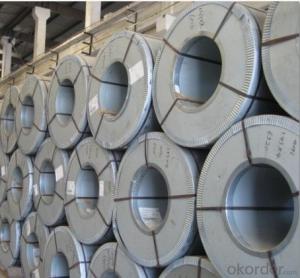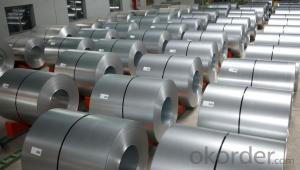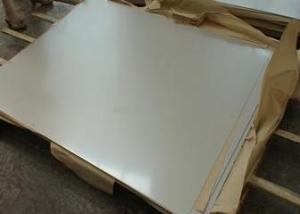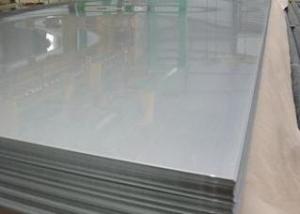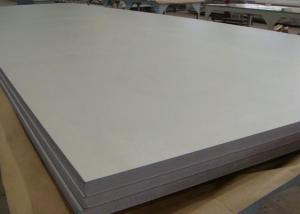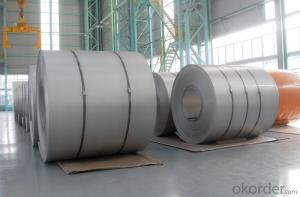Stainless Steel Coil Cold Rolled 201 Surface 2B with High Quality
- Loading Port:
- China main port
- Payment Terms:
- TT OR LC
- Min Order Qty:
- 100 m.t.
- Supply Capability:
- 10000 m.t./month
OKorder Service Pledge
OKorder Financial Service
You Might Also Like
1. Structure of Stainless Steel Coil Cold Rolled 201 Descriptions
Stainless Steel 201 is a new kind of Austenite stainless steel by used Mn, N replace Ni. The steel has good corrosion resistance and hot / cold processing performance, instead of 304 stainless steel products for used in the not high of corrosive environment, such as indoor, inland city outdoor etc.
2. Main Features of the Stainless Steel Coil Cold Rolled 201
Product name: Stainless Steel Coil Cold Rolled 201
Thickness: 0.2mm to 1.5mm
Technical: Cold Rolled
Width: 10mm to 1240mm
Type: 200 Series
Length: As customer's requested
Standard: JIS, SUS, AISI, ASTM
Grade: 201-J1, 201-J4, AISI201, AISI202…
Finish: BA, 2B, 8K, NO.3, NO.4, HL…
MOQ: 25 Metric Tons
Hardness: Low Hard(190 HV Max); Half Hard(240-280HV); Full Hard(42-60 HRC)
Ship Term: FOB any port, China or CFR Destination port
Delivery Time: 15 to 20 day after the receive the deposit or 100%LC
Payment Terms: TT 30% for deposit, Balance against the copy of B/L, or 100%LC
Packaging: By wooden pallet, wooden case or according to customer's request
3. Stainless Steel Coil Cold Rolled 201 Images
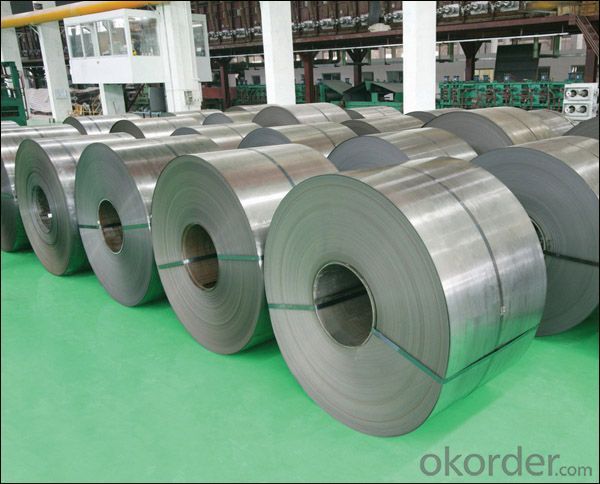
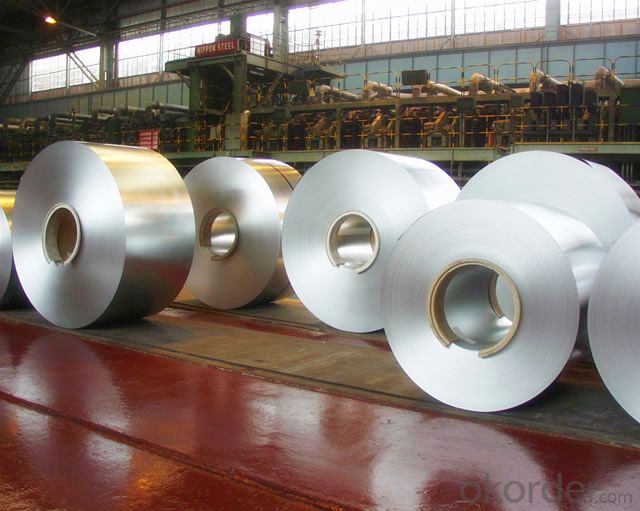
4. Stainless Steel Coil Cold Rolled 201 Specifications
Mechanical Property Contrast | YS (Mpa) | TS (Mpa) | EL(%) | HV | REMARK |
Stainless Steel 201 | 426 | 880 | 52 | 224 | 1.0t |
Stainless Steel 304 | 285 | 710 | 58 | 165 | 1.0t |
Stainless Steel 200 Series Chemicals Contrast (wt. %) | ||||||||
Chemicals | C | Si | Mn | Cr | Ni | N | Other | |
205 | 0.12-0.25 | ≤0.75 | 14.0-15.0 | 16.5-18.0 | 1.0-1.75 | 0.32-0.4 | ||
JIS, | 201 | ≤0.15 | ≤1.0 | 5.5-7.5 | 16.0-18.0 | 3.5-5.5 | ≤0.25 | - |
201L | ≤0.03 | ≤0.75 | 5.5-7.5 | 16.0-18.0 | 3.5-5.5 | ≤0.25 | - | |
202 | ≤0.15 | ≤1.0 | 7.5-10.0 | 17.0-19.0 | 4.0-6.0 | ≤0.25 | - | |
201LN | ≤0.03 | ≤0.75 | 6.4-7.5 | 16.0-17.5 | 4.0-5.5 | 0.1-0.25 | Cu≤1.0 | |
India | 201-J1 | ≤0.08 | ≤0.75 | 7.0-8.0 | 15.0-17.0 | 4.0-5.0 | ≤0.1 | Cu≤1.5 |
201-J3 | ≤0.08 | ≤0.75 | 9.0-10.5 | 14.0-16.0 | 2.0-3.0 | ≤0.15 | Cu≤2.0 | |
201-J4 | ≤0.10 | ≤0.75 | 8.5-10.0 | 15.0-16.0 | ≤1.2 | ≤0.2 | Cu≤2.0 | |
America | 204 | ≤0.03 | ≤1.0 | 7.0-9.0 | 15.0-17.0 | 1.5-3.0 | 0.15-0.3 | (Cu) |
H400 | ≤0.10 | ≤1.0 | 6.0-9.0 | 17.0-19.5 | ≤3.5 | ≤0.3 | - | |
Japan | YUS130S | 0.09 | 0.5 | 11.0 | 18.0 | 6.5 | 0.35 | - |
NTK S-4 | 0.17 | 0.43 | 14.7 | 17.7 | 1.3 | 0.35 | - | |
NM15M | 0.08 | 0.8 | 14.5 | 17.0 | 4.3 | 0.33 | - | |
Europe America | 219 | ≤0.04 | ≤0.75 | 8.0-10.0 | 19.0-21.5 | 5.5-7.5 | 0.15-0.4 | - |
Cromanite | ≤0.08 | ≤1.0 | 9.5-11.0 | 18.0-20.0 | ≤1.0 | 0.4-0.6 | - | |
201 Surface | Characteristic and Application of Stainless Steel Coil Cold Rolled 201 |
2B | The surface brightness and flatness of 2B is better than 2D then through a special surface treatment to improve its mechanical properties,2B could nearly Satisfy comprehensive uses |
No.4 | Polished with abrasive belt of grit#150#180, have better brightness with discontinuous coarse stria, but thinner than NO.3, are used as bathtub buildings inner and electrical appliances kitchen utensils and food processing. |
BA | Cold rolled, bright annealed and skin-passed, the product have excellent brightness like mirror kitchen apparatus, etc. |
8K | The product have excellent brightness and prefer bright can be the mirror. |
5. FAQ of Stainless Steel Coil Cold Rolled 201
Q: Are you factory or trader?
A: We certainly are stainless steel manufacturer and have processing plant.
Q: Can you provide mill test certificate?
A: Yes! Mill test certificate for both hot rolled raw material coils and cold rolled coils are available.
Q: Can you make DDQ (Deep drawing quality)?
A: Yes. Our material has been widely used for producing stainless steel pots and stainless steel sinks, which have strict request for good deep drawing quality.
Q: How to visit your factory?
A: Most of the main cities in the world have flight to Beijing; you can take flight to Beijing first, then we will lead you to our Wuxi mills.
Q: How about your company?
A world class manufacturer & supplier of castings forging in stainless steel, is one of the large-scale professional investment casting production bases in China, consisting of both casting foundry forging and machining factory. Annually more than 90000 tons Precision casting and forging parts are exported to markets in Europe, America and Japan. OEM casting and forging service are available, all according to customer’s requirements.
Q: How to guarantee the quality of the products?
A: We have established the international advanced quality management system,every link from raw material to final product we have strict quality test; We resolutely put an end to unqualified products flowing into the market. At the same time, we will provide necessary follow-up service assurance.
Q: How is the packaging and delivery?
A: Standard export packing (Coil: waterproof paper + protective steel ring; Circle: wooden box), or as your requirement and the delivery term is based on the project.
- Q: Are stainless steel strips suitable for high-temperature oxidation?
- Yes, stainless steel strips are suitable for high-temperature oxidation due to their inherent resistance to oxidation and corrosion. The addition of chromium in stainless steel forms a protective oxide layer that can withstand high temperatures, making it an ideal choice for applications where oxidation resistance is required.
- Q: Can stainless steel strips be used for kitchen appliances?
- Yes, stainless steel strips can be used for kitchen appliances. Stainless steel is a commonly used material for kitchen appliances due to its durability, resistance to corrosion, and easy cleaning properties. Stainless steel strips can be used for various applications in kitchen appliances such as handles, trims, or decorative elements.
- Q: What are the different certifications and standards for stainless steel strips?
- There are several certifications and standards for stainless steel strips, including ASTM (American Society for Testing and Materials) standards, EN (European Norm) standards, and ISO (International Organization for Standardization) certifications. These standards and certifications ensure that stainless steel strips meet specific requirements for composition, mechanical properties, and performance, ensuring their quality and suitability for various applications.
- Q: Are stainless steel strips suitable for food processing applications?
- Yes, stainless steel strips are suitable for food processing applications. Stainless steel is known for its resistance to corrosion, durability, and hygiene properties, making it a popular choice in the food industry. It does not react with food or alter its taste, ensuring product integrity. Additionally, stainless steel strips can be easily cleaned and sanitized, meeting the strict hygiene standards required in food processing.
- Q: How do stainless steel strips compare to aluminum strips in terms of strength?
- Stainless steel strips generally have higher strength compared to aluminum strips. Stainless steel is known for its excellent strength and durability, which makes it suitable for various applications that require resistance to corrosion, heat, and impact. On the other hand, aluminum strips are relatively less strong but are lightweight and have good corrosion resistance. While aluminum strips may not match the strength of stainless steel, they are often preferred in industries where weight is a critical factor, such as aerospace and automotive. Ultimately, the choice between stainless steel and aluminum strips depends on the specific requirements of the application, balancing strength, weight, and other properties.
- Q: What are the different types of stainless steel strips available?
- There are several different types of stainless steel strips available, including austenitic, ferritic, martensitic, and duplex stainless steel. Each type has its own unique properties and characteristics, making them suitable for various applications and industries.
- Q: How do stainless steel strips resist chemical exposure?
- Stainless steel strips resist chemical exposure due to their unique composition and properties. Stainless steel is primarily made up of iron, chromium, and other alloying elements such as nickel and molybdenum. The presence of chromium in stainless steel forms a protective layer of chromium oxide on the surface, which acts as a barrier against chemical attack. This chromium oxide layer is highly stable and prevents the underlying metal from reacting with chemicals or corroding. It is this self-healing and passive nature of stainless steel that provides excellent resistance to various chemicals, including acids, alkalis, and corrosive substances. Additionally, stainless steel strips can be further enhanced to improve their chemical resistance by adjusting the composition or adding specific alloying elements. For example, increasing the nickel content can enhance resistance to certain acids, while adding molybdenum can improve resistance to chloride-containing environments. Furthermore, stainless steel strips can be treated with various surface finishes or coatings to provide additional protection against chemical exposure. These treatments can include passivation, electropolishing, or applying specialized coatings that offer enhanced chemical resistance. Overall, the combination of the inherent composition and the ability to customize stainless steel strips makes them highly resistant to chemical exposure, making them suitable for a wide range of applications in industries such as chemical processing, pharmaceuticals, food processing, and more.
- Q: Are 111 stainless steel strips suitable for wastewater treatment pipelines?
- Stainless steel strips, such as 111 stainless steel, can be suitable for wastewater treatment pipelines depending on the specific requirements and conditions of the pipeline. Stainless steel is known for its corrosion resistance properties, which make it an excellent choice for applications involving exposure to water and wastewater. However, the suitability of 111 stainless steel strips for wastewater treatment pipelines will depend on factors such as the type and concentration of chemicals present in the wastewater, the temperature and pressure conditions, and the overall design and construction of the pipeline system. It is important to consider these factors and consult with experts or engineers specializing in wastewater treatment pipelines to ensure the right material is chosen. In some cases, specific grades of stainless steel, such as 304 or 316, may be more commonly used for wastewater treatment pipelines due to their superior corrosion resistance properties. These grades provide excellent resistance to a wide range of corrosive chemicals typically found in wastewater treatment processes. Ultimately, the suitability of 111 stainless steel strips for wastewater treatment pipelines will depend on a thorough analysis of the specific project requirements and the compatibility of the material with the operational conditions of the pipeline.
- Q: How do stainless steel strips handle exposure to acids?
- Stainless steel strips are highly resistant to the corrosive effects of acids. This is due to the presence of chromium in the composition of stainless steel, which forms a protective oxide layer on the surface of the metal. This oxide layer acts as a barrier, preventing the acid from coming into direct contact with the steel and thereby reducing the risk of corrosion. Additionally, stainless steel also contains other alloying elements such as nickel and molybdenum that further enhance its resistance to acids. However, it is important to note that the performance of stainless steel strips can vary depending on the specific type and concentration of acid being exposed to. In some cases, certain aggressive acids may still cause some degree of corrosion, especially at elevated temperatures or prolonged exposure. Therefore, it is advisable to consult with a corrosion specialist or refer to specific guidelines to ensure the appropriate grade of stainless steel is chosen for a particular acid exposure application.
- Q: Can stainless steel strips be used for decorative trims?
- Yes, stainless steel strips can be used for decorative trims. Stainless steel is known for its durability, corrosion resistance, and sleek appearance, making it a popular choice for various decorative applications. Stainless steel strips can be easily shaped, cut, and installed, allowing for creative and intricate designs. Whether it is for embellishing furniture, cabinetry, or architectural elements, stainless steel strips can add a modern and sophisticated touch to any space. Additionally, stainless steel's ability to withstand harsh weather conditions makes it suitable for both indoor and outdoor decorative trims.
Send your message to us
Stainless Steel Coil Cold Rolled 201 Surface 2B with High Quality
- Loading Port:
- China main port
- Payment Terms:
- TT OR LC
- Min Order Qty:
- 100 m.t.
- Supply Capability:
- 10000 m.t./month
OKorder Service Pledge
OKorder Financial Service
Similar products
Hot products
Hot Searches
Related keywords
